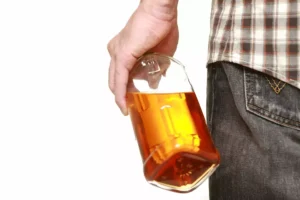
Comparative effectiveness evidence is emerging which shows that people with OUD in British Columbia given buprenorphine/naloxone when initiating treatment were 60% more likely to discontinue treatment than those who received methadone (1). More research is needed on optimal methadone dosing in patients with high opioid tolerance due to use of fentanyl, as well as on induction protocols for these patients. Growing evidence suggests that methadone is as safe and effective as buprenorphine for patients who use fentanyl. In a 2020 naturalistic follow-up study, 53% of patients admitted to methadone treatment who tested positive for fentanyl at intake were still in treatment a year later, compared to 47% for patients who tested negative.
Can MDMA still win FDA approval? Supporters rally as time runs out
This approach has commonly been used in psychiatric and addiction investigations to assess the neurobiological basis of these disorders (121). Here, we will explore the currently available evidence for how psychedelics may induce a re-broadening of salience through the lens of network neuroscience. We will address the fundamental roles of intrinsic large-scale brain networks in addiction, crucially the DMN and the SN, and their potential as targets for accentuating psychedelic-induced perspective change and therapeutic efficacy in addiction. Where there are psychedelics addictive are gaps in the current literature, we will offer examples of testable RSFC neuroimaging analyses that are able to probe the putative mechanisms of action of psychedelics in modulating addiction processes related to brain network dysfunction. Ibogaine is a psychoactive alkaloid derived from the roots of a plant native to Gabon and central Africa called Tabernanthe iboga. Ibogaine binds to numerous neuroreceptors (28) though its primary mechanism of action is not mediated through the 5-HT2AR but through interaction with multiple neuroreceptor systems.
- Studies have shown that tolerance to LSD also translates to tolerance for psilocybin and mescaline.
- Thus, the behavioral response to serotonin in β-arrestin-2 KO mice may fundamentally differ from that in WT mice.
- In the 1990’s the US National Institute of Drug Abuse (NIDA) funded a phase 1 study into the effects of Ibogaine for opiate withdrawal.
- Patients at one California OTP in a small qualitative study reported increased autonomy and treatment engagement.
Cardiovascular pathology in human studies
- In conditioned-stimulus olfactory learning, the psychedelic DOI was found significantly to disrupt short-term learning and memory (Johnson et al., 2011).
- The activity maximum in layer V was always larger and persisted longer than in any other layers and seemed to be initiated in layer V as an excitatory interaction between pyramidal neurons that propagated through the neocortex.
- For example, Cohen (1960) found one single case of a psychotic reaction lasting more than 48 h, out of 1200 experimental, non-patient research participants administered LSD or mescaline.
- These results were not compatible with the hypothesis that 5-HT2A receptors might serve as presynaptic heteroreceptors on mediodorsal thalamic glutamate terminals in the middle layers of the PFC.
- Subsequently, Rabin et al. (2002) pointed out the lack of correlation between potency in drug substitution in rats trained to discriminate LSD or DOM from saline and efficacy in stimulating PI hydrolysis.
- Most recreational drugs, including caffeine, alcohol, nicotine, marijuana, opiates and cocaine, artificially elevate the available concentration of dopamine in your brain.
Griffiths (2015) concluded that a single moderate to high dose of psilocybin, if given under supportive conditions to carefully screened and prepared participants, produced substantial and enduring decreases in anxiety and depression in patients with a life-threatening cancer diagnosis. Although nonhuman primates might be the best animals to model the actions of psychedelics in humans, almost nothing has been published in the past decade using monkeys. Fantegrossi et al. (2004) reported on transient reinforcing effects of phenylisopropylamine and indoleamine psychedelics in rhesus monkeys. They investigated the capacity of several psychedelics to maintain self-administration in four rhesus monkeys with a history of MDMA self-administration. No dose of either DMT or psilocybin engendered significantly higher mean response rates than did contingent saline, although one monkey did exhibit transitory reinforcing effects after DMT and psilocybin.

What are psychedelic and dissociative drugs?
Participants were prepared by presession interviews and instructions regarding how to approach the drug sessions. Although lacking detailed specifics as well as a follow-up, this early report does suggest that psychedelics might acutely improve creativity. More recently, Hasselbalch et al. (2008) used [18F]altanserin PET to assess cerebral 5-HT2A receptor density in 16 patients with mild cognitive impairment of the amnestic type, compared with 17 age and sex-matched controls. Patients with mild cognitive impairment are considered at increased risk of developing AD, and their inclusion criteria were deliberately aimed at including patients with symptoms of very early AD. Indeed, at 1-year follow-up, six of their patients had progressed clinically and fulfilled AD criteria. This study revealed a significant 20%–30% global reduction of 5-HT2A binding in most neocortical areas.
- A more granular understanding of the treatment effects of psychedelics will facilitate the optimisation of the psychedelic therapy drug development landscape, and ultimately improve patient outcomes.
- There is a wide variety of hallucinogenic mushrooms, and their legal status is somewhat ambiguous, as they can be found growing wild in many parts of the world.
- So far, ketamine is the only psychedelic on the market approved to treat mental health conditions, but clinical trials on the others are unearthing treatment options once thought of as fringe medicine.
- It has been recognized for some time that psychedelics (i.e., 5-HT2A agonists) increase levels of cortical glutamate (Aghajanian and Marek, 1997, 1999b; Béïque et al., 2007; also see the earlier section on glutamate in this review).
Substance Use Disorders
This includes starting with a low dose, being in a safe and comfortable environment, having a trusted sitter present, and educating yourself on harm reduction strategies. In pre-clinical research, one experiment showed monkeys had no reliable interest in self-administering psilocybin. Self-administration is a common indicator for substance abuse, leading the authors to conclude psilocybin may only be mildly addictive, or may have a mix of both reinforcing and aversive effects. In October, the National Institutes of Health awarded a team led by Johnson the first federal grant for psychedelic treatment research in over half a century. The nearly $4 million grant will allow the researchers to conduct the first-ever double-blind randomized clinical trial on psilocybin as a treatment for nicotine addiction. According to the Substance Abuse and Mental Health Services Administration, the portion of patients reporting hallucinogens as their primary substance of abuse didn’t rise above 0.1 percent from 2005 to 2015.

How is NIDA advancing research on psychedelic and dissociative drugs?
- Ultimately, the field is still evolving—more rigorous clinical research is required to establish the long-term effects of these treatments.
- Biden administration preparing for potential FDA approval of MDMA-assisted therapy for PTSD.
- Although the classic psychedelics have not been directly responsible for causing death, the judgment of users is certainly impaired while under the influence of these drugs.
- Midbrain raphe cells send serotonergic projections throughout the forebrain and are the source of serotonin afferents in the PFC (Moore et al., 1978).
All subjects subsequently were interviewed about the drug effects, and interviews were analyzed using interpretative phenomenological analysis, a qualitative method. All subjects reported that the onset of drug effect was very rapid and intense, with a duration of effect lasting 10–15 https://ecosoberhouse.com/ minutes. Altered somatosensory, visual, auditory, and proprioceptive sensations were reported, with 14 of 15 subjects describing perceptual changes as the primary effect of the drug. Thirteen subjects reported changes in perception of time, either speeding up or slowing down.


Slow oscillation was most robust and occurred first in or near cortical layer V, after a short delay by activity in deeper layers. The activity maximum in layer V was always larger and persisted longer than in any other layers and seemed to be initiated in layer V as an excitatory interaction between pyramidal neurons that propagated through the neocortex. These workers suggest that the basic operation of cortical networks is the generation of self-maintained depolarized states that are tightly regulated through interaction with local GABA/GABAergic neurons and intrinsic membrane conductances. They suggest that the ability of cortical networks to generate persistent and recurring activities even in the absence of ongoing subcortical inputs may be a process that underlies perceptual influences on sensory information processing. These results demonstrate functional selectivity at the 5-HT2A receptor, in which serotonin and its N-methylated derivatives promote differential signaling in the mouse frontal cortex and in primary cortical neurons and thus have different mechanisms underlying manifestation of the HTR. That is, serotonin activation leads to a signaling complex that involves β-arrestin-2, Src, and Akt, whereas N-methylated derivatives produce the HTR through a signaling mechanism that is independent of β-arrestin-2 and does not require activation of Akt.

Balíková (2005) reports a fatal and nonfatal overdose after ingestion of the psychedelic phenethylamine 2,5-dimethoxy-4-bromoamphetamine (DOB) by two male individuals. Gas chromatography–mass spectrometry was used to detect the presence of DOB in both gastric and urine samples of the two men. Although one subject survived, the other suffered convulsions and metabolic acidosis and died 6 days after admission. Psychedelics are a class of drug that cannot be fully understood without reference to a number of other fields of research, including anthropology, ethnopharmacology, psychiatry, psychology, sociology, and others. This review will focus mostly on pharmacology, both preclinical and clinical, but on occasion reference will be made to aspects of some of those other areas. As mentioned above, this is partly due to the unpredictability and intensity of the experience, which can lead to some users self-imposing limits on the frequency of use or the dosage.
Overall, 72.2% of volunteers had complete mystical experiences at either or both doses of 20 and 30 mg/70 kg. Positive ratings about life, attitudes about self, mood, social effects, and behavior also increased as a function of dose. Ratings at the 14-month follow-up were undiminished compared with ratings at 1 month after the sessions.
